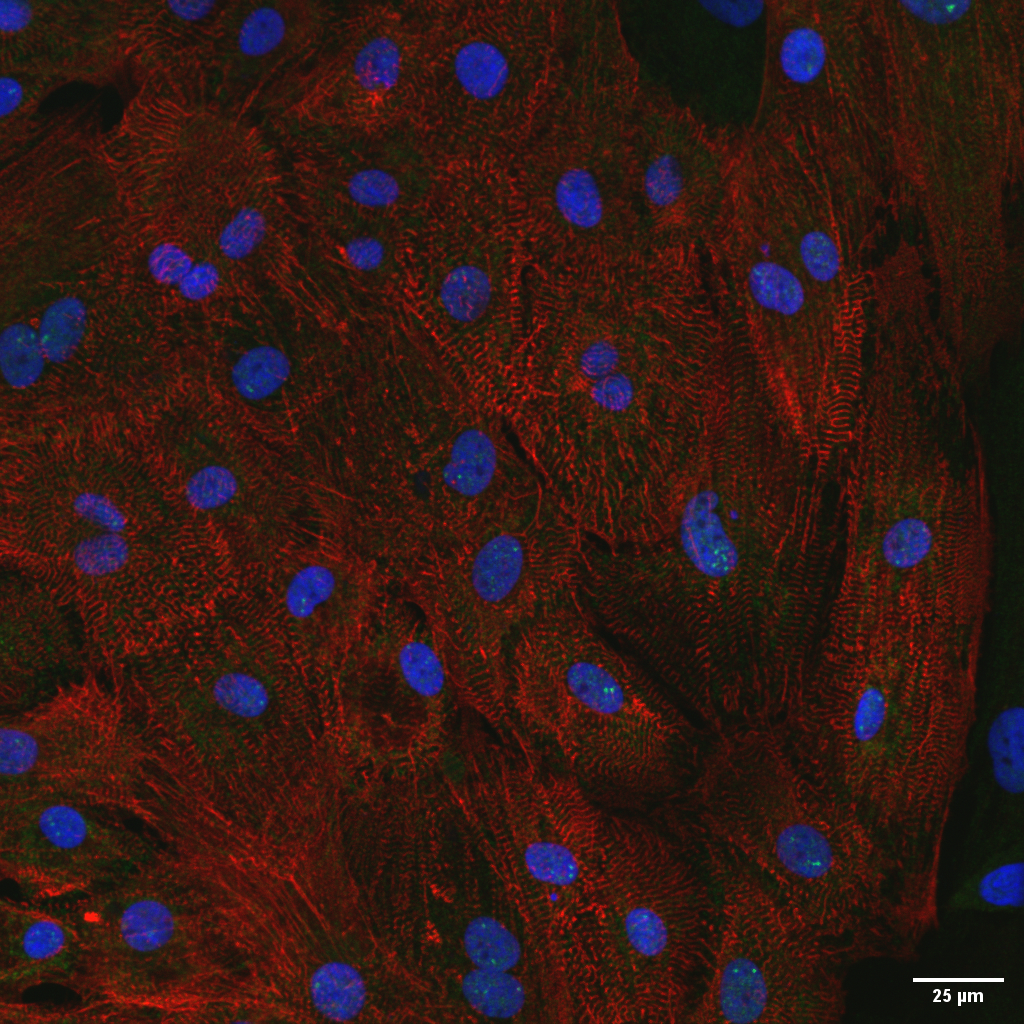Collaborative projects with UZA with support from Kom op tegen Kanker, The Marfan Foundation, and others.
Team leads: Bart Loeys, Aline Verstraeten, Dorien Schepers, Jeannette Meester

Background
Cardiomyopathies are disorders of the heart muscle, resulting in improper contraction and/or relaxation of the heart. This can lead to cardiac arrhythmias, heart failure and even sudden cardiac death, sometimes in young individuals. Often these cardiomyopathies are inherited and research has already enabled identification of more than 60 genes associated with these disorders. But in more than half of the patients no mutations are detected in any of the known genes and the genetic cause remains elusive. Through study of these disease genes new insight has already been gained in the pathophysiological mechanisms causing cardiomyopathies, but the picture remains far from complete. At present, there are some therapeutic options to reduce disease symptoms, but therapies that are capable of completely stopping or even reversing the disease are not yet available.
Goal
We aim to further investigate the genetic causes and disease mechanisms underlying cardiomyopathies. This will lead to a significantly improved understanding of the disorders and provide the possibility to develop novel therapies. With our research team we aim to improve genetic diagnosis, risk prediction, optimize counseling and deliver true personalized management of patients to increase their quality of life.
Strategy
Using modern DNA sequencing techniques (including whole-exome and whole-genome sequencing) in patients without a genetic diagnosis, we will identify novel genes involved in cardiomyopathies. We are also focusing on the identification of genetic modifiers that play a role in the development of these disorders and can explain the phenotypic variability observed within families. The functional effect of mutations in these genes and modifiers are under investigation in patient samples, induced pluripotent stem cell (iPSC)-derived cardiac cells and transgenic zebrafish or mice. Hereto, we are using state-of-the-art techniques such as CRISPR/Cas genome editing, transcriptomics, interactomics, proteomics, high-tech microscopy and micro-electrode arrays. Based on these novel insights, new therapeutic targets can be identified for which novel drugs can be tested in the pre-clinical disease models that we generated.
Disorders under investigation:
Hypertrophic cardiomyopathy, dilated cardiomyopathy, arrhythmogenic cardiomyopathy, non-compaction cardiomyopathy.
Background
The aorta serves as the artery responsible for the distribution of oxygen rich blood from the heart towards the distal parts of the human body. A pathological expansion of the thoracic aorta is called a thoracic aortic aneurysm and entails a high risk for aortic dissection and/or rupture. The latter events associate with severe internal bleedings, often resulting in sudden death. To date, genetic defects in more than 35 genes have been linked with thoracic aortic aneurysm/dissection, explaining about 30% of patients with thoracic aortic aneurysm/dissection. Identification and functional characterization of these disease genes have been key in acquiring our current aortopathy knowledge and delivering novel decelerating therapeutic agents. Medical therapies capable of completely stopping or even reversing aneurysm formation are not yet available though.
Goal
We aim to contribute to the further elucidation of the genetic and mechanistic landscape of thoracic aortic aneurysm as well as to develop novel therapies, with the ultimate goal of improving patient management. The ongoing research lines are contrived in such a way that their results are expected to increase the molecular diagnostic yield, to improve genetic counseling, and to identify predictive markers and curative therapies.
Strategy
The lab has a longstanding tradition in the use of DNA sequencing technologies in affected individuals from families that are negative for mutations in the known genes to find novel thoracic aortic aneurysm genes. For a selection of these genes, we seek to profoundly map the downstream functional consequences and to pinpoint novel drug targets and/or genuine read-outs for drug testing. Novel candidate drug options ensuing from the latter experiments are subsequently tested in pre-clinical disease models. In addition, an important research line on the discovery and first-line functional characterization of genetic aortopathy modifiers is also established. Individuals belonging to the same family and carrying the same primary mutation can namely range from completely asymptomatic to sudden death at young age due to dissection, considerably complicating patient counselling. Besides traditional molecular biology approaches, the current projects involve the use of state-of-the-art techniques such as whole exome sequencing, whole genome sequencing, transcriptomics and interactomics/proteomics in patient samples, induced pluripotent stem cell-derived vascular smooth muscle cells and/or mouse models.
Disorders under investigation:
Marfan syndrome, Loeys-Dietz syndrome, Meester-Loeys syndrome, IPO8-related aneurysm syndroom, vascular Ehlers-Danlos syndrome, arterial tortuosity syndrome, bicuspid aortic valve related thoracic aortic aneurysm syndrome, familial thoracic aorta aneurysm syndrome.